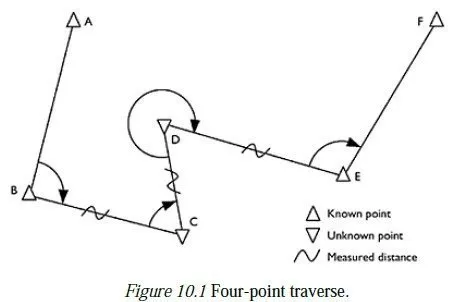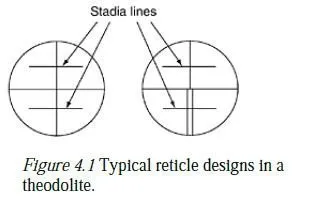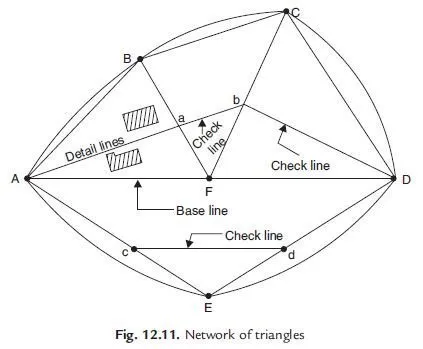Errors in chaining may be classified as:
(i) Personal errors
(ii) Compensating errors, and
(iii) Cumulating errors.
Personal Errors
Wrong reading, wrong recording, reading from wrong end of chain etc., are personal errors. These errors are serious errors and cannot be detected easily. Care should be taken to avoid such errors.
Compensating Errors
These errors may be sometimes positive and sometimes negative. Hence they are likely to get compensated when large number of readings are taken. The magnitude of such errors can be estimated by theory of probability. The following are the examples of such errors:
(i) Incorrect marking of the end of a chain.
(ii) Fractional part of chain may not be correct though total length is corrected.
(iii) Graduations in tape may not be exactly same throughout.
(iv) In the method of stepping while measuring sloping ground, plumbing may be crude.
Cumulative Errors
The errors, that occur always in the same direction are called cumulative errors. In each reading the error may be small, but when large number of measurements are made they may be considerable, since the error is always on one side. Examples of such errors are:
(i) Bad ranging
(ii) Bad straightening
(iii) Erroneous length of chain
(iv) Temperature variation
(v) Variation in applied pull
(vi) Non-horizontality
(vii) Sag in the chain, if suspended for measuring horizontal distance on a sloping ground.
Errors (i), (ii), (vi) and (vii) are always +ve since they make measured length more than actual.
Errors (iii), (iv) and (v) may be +ve or ve.



